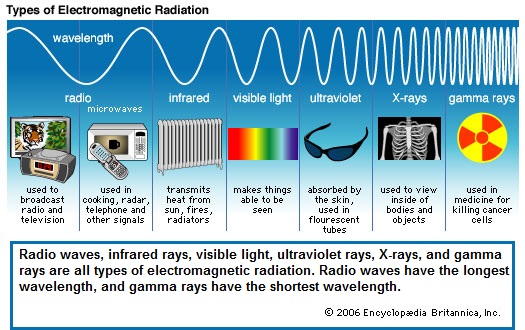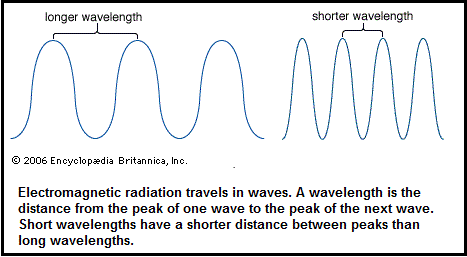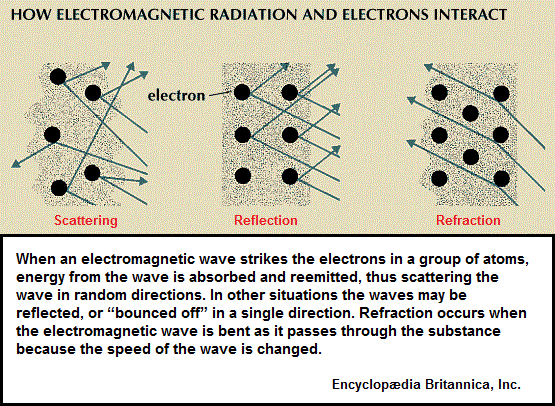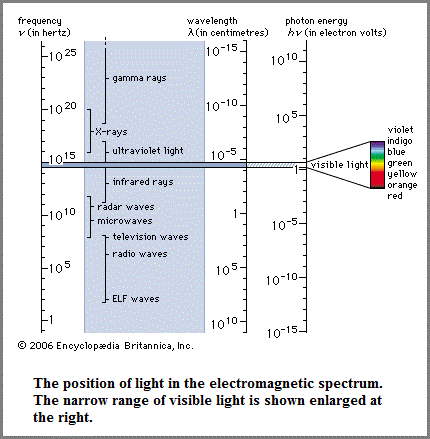
Page 42
http://threesology.org
Note: the contents of this page as well as those which precede and follow, must be read as a continuation and/or overlap in order that the continuity about a relationship to/with the typical dichotomous assignment of Artificial Intelligence (such as the usage of zeros and ones used in computer programming) as well as the dichotomous arrangement of the idea that one could possibly talk seriously about peace from a different perspective... will not be lost (such as war being frequently used to describe an absence of peace and vice-versa). However, if your mind is prone to being distracted by timed or untimed commercialization (such as that seen in various types of American-based television, radio, news media and magazine publishing... not to mention the average classroom which carries over into the everyday workplace), you may be unable to sustain prolonged exposures to divergent ideas about a singular topic without becoming confused, unless the information is provided in a very simplistic manner.
The study of... or at least having some working knowledge of light beyond its everyday commonality of usage, in terms of the electro-magnetic spectrum, is of value in the discussions of Artificial Intelligence since it involves the electron. Even though visible light makes up a miniscule division, the spectrum is indeed quite expressive. Let us take a look at some familiar items of identification in order to provide us with a simplified list of differences:
 |
 |
There have been two competing compositional theories on the structure of light (waves and particles [formally named corpuscular]), both of which have led to advances in humanity's contemplations of understanding atomic structure. Let us begin anew our discussion at this juncture of a fascinating field of research, since the usage of the photon in the construction of an alternative form of computer and associated computation is being researched as a means of transferring/transmitting data more simply and much quicker over the "vast" distances between atomic components (and sub-components), relative to the scale at which they exist:
Wave theory and corpuscular theory The Newtonian view of the universe may be described as a mechanistic interpretation. All components of the universe, small or large, obey the laws of mechanics, and all phenomena are in the last analysis based on matter in motion. A conceptual difficulty in Newtonian mechanics, however, is the way in which the gravitational force between two massive objects acts over a distance across empty space. Newton did not address this question, but many of his contemporaries hypothesized that the gravitational force was mediated through an invisible and frictionless medium which Aristotle had called the ether (or aether). The problem is that everyday experience of natural phenomena shows mechanical things to be moved by forces which make contact. Any cause and effect without a discernable contact, or “action at a distance,” contradicts common sense and has been an unacceptable notion since antiquity. Whenever the nature of the transmission of certain actions and effects over a distance was not yet understood, the ether was resorted to as a conceptual solution of the transmitting medium. By necessity, any description of how the ether functioned remained vague, but its existence was required by common sense and thus not questioned. In Newton's day, light was one phenomenon, besides gravitation, whose effects were apparent at large distances from its source. Newton contributed greatly to the scientific knowledge of light. His experiments revealed that white light is a composite of many colours, which can be dispersed by a prism and reunited to again yield white light. The propagation of light along straight lines convinced him that it consists of tiny particles which emanate at high or infinite speed from the light source. The first observation from which a finite speed of light was deduced was made soon thereafter, in 1676, by the Danish astronomer Ole Rømer. Observations of two phenomena strongly suggested that light propagates as waves. One of these involved interference by thin films, which was discovered in England independently by Robert Boyle and Robert Hooke. The other had to do with the diffraction of light in the geometric shadow of an opaque screen. The latter was also discovered by Hooke, who published a wave theory of light in 1665 to explain it. The Dutch scientist Christiaan Huygens greatly improved the wave theory and explained reflection and refraction in terms of what is now called Huygens' principle. According to this principle (published in 1690), each point on a wave front in the hypothetical ether or in an optical medium is a source of a new spherical light wave and the wave front is the envelope of all the individual wavelets that originate from the old wave front. In 1669 another Danish scientist, Erasmus Bartholin, discovered the polarization of light by double refraction in Iceland spar (calcite). This finding had a profound effect on the conception of the nature of light. At that time, the only waves known were those of sound, which are longitudinal. It was inconceivable to both Newton and Huygens that light could consist of transverse waves in which vibrations are perpendicular to the direction of propagation. Huygens gave a satisfactory account of double refraction by proposing that the asymmetry of the structure of Iceland spar causes the secondary wavelets to be ellipsoidal instead of spherical in his wave front construction. Since Huygens believed in longitudinal waves, he failed, however, to understand the phenomena associated with polarized light. Newton, on the other hand, used these phenomena as the bases for an additional argument for his corpuscular theory of light. Particles, he argued in 1717, have “sides” and can thus exhibit properties that depend on the directions perpendicular to the direction of motion. It may be surprising that Huygens did not make use of the phenomenon of interference to support his wave theory; but for him waves were actually pulses instead of periodic waves with a certain wavelength. One should bear in mind that the word wave may have a very different conceptual meaning and convey different images at various times to different people. It took nearly a century before a new wave theory was formulated by the physicists Thomas Young of England and Augustin-Jean Fresnel of France. Based on his experiments on interference, Young realized for the first time that light is a transverse wave. Fresnel then succeeded in explaining all optical phenomena known at the beginning of the 19th century with a new wave theory. No proponents of the corpuscular light theory remained. Nonetheless, it is always satisfying when a competing theory is discarded on grounds that one of its principal predictions is contradicted by experiment. The corpuscular theory explained the refraction of light passing from a medium of given density to a denser one in terms of the attraction of light particles into the latter. This means the light velocity should be larger in the denser medium. Huygens' construction of wave fronts waving across the boundary between two optical media predicted the opposite—that is to say, a smaller light velocity in the denser medium. The measurement of the light velocity in air and water by Armand-Hippolyte-Louis Fizeau and independently by Jean-Bernard-Léon Foucault during the mid-19th century decided the case in favour of the wave theory. The transverse wave nature of light implied that the ether must be a solid elastic medium. The larger velocity of light suggested, moreover, a great elastic stiffness of this medium; yet, it was recognized that all celestial bodies move through the ether without encountering such difficulties as friction. These conceptual problems remained unsolved until the beginning of the 20th century. Hellmut FritzscheRelation between electricity and magnetism As early as 1760 the Swiss-born mathematician Leonhard Euler suggested that the same ether that propagates light is responsible for electrical phenomena. In comparison with both mechanics and optics, however, the science of electricity was slow to develop. Magnetism was the one science that made progress in the Middle Ages, following the introduction from China into the West of the magnetic compass, but electromagnetism played little part in the scientific revolution of the 17th century. It was, however, the only part of physics in which very significant progress was made during the 18th century. By the end of that century the laws of electrostatics—the behaviour of charged particles at rest—were well known, and the stage was set for the development of the elaborate mathematical description first made by the French mathematician Siméon-Denis Poisson. There was no apparent connection of electricity with magnetism, except that magnetic poles, like electric charges, attract and repel with an inverse-square law force. Following the discoveries in electrochemistry (the chemical effects of electrical current) by the Italian investigators Luigi Galvani, a physiologist, and Alessandro Volta, a physicist, interest turned to current electricity. A search was made by the Danish physicist Hans Christian Ørsted for some connection between electric currents and magnetism, and during the winter of 1819–20 he observed the effect of a current on a magnetic needle. Members of the French Academy learned about Ørsted's discovery in September 1820, and several of them began to investigate it further. Of these, the most thorough in both experiment and theory was the physicist André-Marie Ampère, who may be called the father of electrodynamics. The magnetic effect of a current had been observed earlier (1802) by an Italian jurist, Gian Domenico Romagnosi, but the announcement was published in an obscure newspaper. The list of four fundamental empirical laws of electricity and magnetism was made complete with the discovery of electromagnetic induction by both Faraday and Joseph Henry in about 1831. In brief, a change in magnetic flux through a conducting circuit produces a current in the circuit. The observation that the induced current is in a direction to oppose the change that produces it, now known as Lenz's law, was formulated by a Russian-born physicist, Heinrich Friedrich Emil Lenz, in 1834. When the laws were put into mathematical form by Maxwell, the law of induction was generalized to include the production of electric force in space, independent of actual conducting circuits, but was otherwise unchanged. On the other hand, Ampère's law describing the magnetic effect of a current required amendment in order to be consistent with the conservation of charge (the total charge must remain constant) in the presence of changing electric fields, and Maxwell introduced the idea of “displacement current” to make the set of equations logically consistent. As a result, he found on combining the equations that he arrived at a wave equation, according to which transverse electric and magnetic disturbances were propagated with a velocity that could be calculated from electrical measurements. These measurements were available to Maxwell, having been made in 1856 by the German physicists Rudolph Hermann Arndt Kohlrausch and Wilhelm Eduard Weber, and his calculation gave him a result that was the same, within the limits of error, as the speed of light in vacuum. It was the coincidence of this value with the velocity of the waves predicted by his theory that convinced Maxwell of the electromagnetic nature of light. Melba PhillipsHellmut Fritzsche Source: "Electromagnetic Radiation." Encyclopædia Britannica Ultimate Reference Suite, 2013. |
Let us now provide a couple of additional images, one which shows the interaction between electrons and electromagnetic waves and the other which illustrates how small the visible field of light actually is in relation to other wave lengths.
 |
 |
|
The most prominent advocate of a particle theory of light was Isaac Newton. Newton's careful investigations into the properties of light in the 1660s led to his discovery that white light consists of a mixture of colours. He struggled with a formulation of the nature of light, ultimately asserting in Opticks (1704) that light consists of a stream of corpuscles, or particles. To reconcile his particle model with the known law of refraction, Newton speculated that transparent objects (such as glass) exert attractive forces on the particles, with the consequence that the speed of light in a transparent medium is always greater than the speed of light in a vacuum. He also postulated that particles of different colours of light have slightly different masses, leading to different speeds in transparent media and hence different angles of refraction. Newton presented his speculations in Opticks in the form of a series of queries rather than as a set of postulates, possibly conveying an ambivalence regarding the ultimate nature of light. Because of his immense authority in the scientific community, there were few challenges to his particle model of light in the century after his death in 1727. Newton's corpuscular model survived into the early years of the 19th century, at which time evidence for the wave nature of light became overwhelming. Theoretical and experimental work in the mid to late 19th century convincingly established light as an electromagnetic wave, and the issue seemed to be resolved by 1900. With the arrival of quantum mechanics in the early decades of the 20th century, however, the controversy over the nature of light resurfaced... Light as electromagnetic radiation In spite of theoretical and experimental advances in the first half of the 19th century that established the wave properties of light, the nature of light was not yet revealed—the identity of the wave oscillations remained a mystery. This situation dramatically changed in the 1860s when the Scottish physicist James Clerk Maxwell, in a watershed theoretical treatment, unified the fields of electricity, magnetism, and optics. In his formulation of electromagnetism, Maxwell described light as a propagating wave of electric and magnetic fields. More generally, he predicted the existence of electromagnetic radiation: coupled electric and magnetic fields traveling as waves at a speed equal to the known speed of light. In 1888 German physicist Heinrich Hertz succeeded in demonstrating the existence of long-wavelength electromagnetic waves and showed that their properties are consistent with those of the shorter-wavelength visible light. Electric and magnetic fields The subjects of electricity and magnetism were well developed by the time Maxwell began his synthesizing work. English physician William Gilbert initiated the careful study of magnetic phenomena in the late 16th century. In the late 1700s an understanding of electric phenomena was pioneered by Benjamin Franklin, Charles-Augustin de Coulomb, and others. Siméon-Denis Poisson, Pierre-Simon Laplace, and Carl Friedrich Gauss developed powerful mathematical descriptions of electrostatics and magnetostatics that stand to the present time. The first connection between electric and magnetic effects was discovered by Danish physicist Hans Christian Ørsted in 1820 when he found that electric currents produce magnetic forces. Soon after, French physicist André-Marie Ampère developed a mathematical formulation (Ampère's law) relating currents to magnetic effects. In 1831 the great English experimentalist Michael Faraday discovered electromagnetic induction, in which a moving magnet (more generally, a changing magnetic flux) induces an electric current in a conducting circuit. Faraday's conception of electric and magnetic effects laid the groundwork for Maxwell's equations. Faraday visualized electric charges as producing fields that extend through space and transmit electric and magnetic forces to other distant charges. The notion of electric and magnetic fields is central to the theory of electromagnetism, and so it requires some explanation. A field is used to represent any physical quantity whose value changes from one point in space to another. For example, the temperature of the Earth's atmosphere has a definite value at every point above the surface of the Earth; to specify the atmospheric temperature completely thus requires specifying a distribution of numbers—one for each spatial point. The temperature “field” is simply a mathematical accounting of those numbers; it may be expressed as a function of the spatial coordinates. The values of the temperature field can also vary with time; therefore, the field is more generally expressed as a function of spatial coordinates and time: T(x, y, z, t), where T is the temperature field, x, y, and z are the spatial coordinates, and t is the time. Temperature is an example of a scalar field; its complete specification requires only one number for each spatial point. Vector fields, on the other hand, describe physical quantities that have a direction and magnitude at each point in space. A familiar example is the velocity field of a fluid. Electric and magnetic fields are also vector fields; the electric field is written as E(x, y, z, t) and the magnetic field as B(x, y, z, t). Source: "Light." Encyclopædia Britannica Ultimate Reference Suite, 2013. |
|
Optics Since they provided the principal basis for subsequent investigations, Newton's optical views were subject to close consideration until well into the 19th century. From his researches into the phenomena of colour, Newton became convinced that dispersion necessarily accompanies refraction and that chromatic aberration (colour distortion) could therefore be eliminated by employing reflectors, rather than refractors, as telescopes. By the mid-18th century Euler and others had theoretical arguments against Newton, and Euler offered the human eye as an example of an achromatic lens system. Although he was virtually alone in this, Euler also rejected Newton's essentially corpuscular theory of the nature of light by explaining optical phenomena in terms of vibrations in a fluid ether. The dominance of Newton's theory throughout the 18th century was due partly to its successful direct application by Newton and his followers and partly to the comprehensiveness of Newton's thought. For example, Bradley's observations found an immediate and natural explanation in terms of the corpuscular theory that also was supported by the accelerating success of Newton's gravitational theory involving discrete particles of matter. At the turn of the century, Thomas Young, an English physician studying the power of accommodation of the eye (i.e., its focusing power), was led gradually to extensive investigations and discoveries in optics, including the effect of interference. By means of a wave theory of light, Young was able to explain both this effect, which in its most dramatic manifestation results in two rays of light canceling each other to produce darkness, and also the various colour phenomena observed by Newton. The wave theory of light was developed from 1815 onward in a series of brilliant mathematical and experimental memoirs of the physicist Augustin-Jean Fresnel but was countered by adherents of the corpuscular theory, most notably by a group of other French scientists, Pierre-Simon Laplace, Siméon-Denis Poisson, Étienne Malus, and Jean-Baptiste Biot, and most strikingly in connection with Malus's discovery (1808) of the polarization of light by reflection. Following Young's suggestion in 1817, Fresnel was able to render polarization effects comprehensible by means of a wave theory that considered light to be a transverse rather than a longitudinal wave, as the analogy with sound had suggested. The propagation of a transverse wave, the velocity of which through various media and under a variety of conditions was measured terrestrially with increasing accuracy from mid-century onward, seemed to require an ether having the properties of a highly elastic solid (e.g., such as steel), which, however, offered no resistance to the planetary motions. These bizarre properties stimulated a number of mechanical models of the ether, most notably those of the English physicist William Thomson, Lord Kelvin. In order to encompass the aberration of light by means of his wave theory, Fresnel had assumed that the motionless ether freely permeated the opaque Earth and thus remained unaffected by its motions. Furthermore, he derived as a theoretical consequence (verified experimentally in mid-century by Armand-Hippolyte-Louis Fizeau) that the ether was partially, and only partially, dragged along by a moving transparent substance depending on the index of refraction of the substance. However, all subsequent investigators (most notably the American scientists A.A. Michelson and Edward W. Morley, in 1887) failed in their attempts to measure the required ether drift. It was just to escape this difficulty of a necessary but undetected ether drift that George Francis FitzGerald of England and the Dutch theorist Hendrik Antoon Lorentz independently, at the close of the century, postulated the contraction of moving bodies in the direction of their motion through the ether. The Lorentz–FitzGerald contraction involves the square of the ratio of the velocity of the body to the velocity of light and ensures theoretically the experimental undetectability of the ether drift. It was the seeming necessity of arbitrary postulations of this kind that was eliminated by Einstein's formulation of relativity theory. At the turn of the century, Thomas Young, an English physician studying the power of accommodation of the eye (i.e., its focusing power), was led gradually to extensive investigations and discoveries in optics, including the effect of interference. By means of a wave theory of light, Young was able to explain both this effect, which in its most dramatic manifestation results in two rays of light canceling each other to produce darkness, and also the various colour phenomena observed by Newton. The wave theory of light was developed from 1815 onward in a series of brilliant mathematical and experimental memoirs of the physicist Augustin-Jean Fresnel but was countered by adherents of the corpuscular theory, most notably by a group of other French scientists, Pierre-Simon Laplace, Siméon-Denis Poisson, Étienne Malus, and Jean-Baptiste Biot, and most strikingly in connection with Malus's discovery (1808) of the polarization of light by reflection. Following Young's suggestion in 1817, Fresnel was able to render polarization effects comprehensible by means of a wave theory that considered light to be a transverse rather than a longitudinal wave, as the analogy with sound had suggested. The propagation of a transverse wave, the velocity of which through various media and under a variety of conditions was measured terrestrially with increasing accuracy from mid-century onward, seemed to require an ether having the properties of a highly elastic solid (e.g., such as steel), which, however, offered no resistance to the planetary motions. These bizarre properties stimulated a number of mechanical models of the ether, most notably those of the English physicist William Thomson, Lord Kelvin. In order to encompass the aberration of light by means of his wave theory, Fresnel had assumed that the motionless ether freely permeated the opaque Earth and thus remained unaffected by its motions. Furthermore, he derived as a theoretical consequence (verified experimentally in mid-century by Armand-Hippolyte-Louis Fizeau) that the ether was partially, and only partially, dragged along by a moving transparent substance depending on the index of refraction of the substance. However, all subsequent investigators (most notably the American scientists A.A. Michelson and Edward W. Morley, in 1887) failed in their attempts to measure the required ether drift. It was just to escape this difficulty of a necessary but undetected ether drift that George Francis FitzGerald of England and the Dutch theorist Hendrik Antoon Lorentz independently, at the close of the century, postulated the contraction of moving bodies in the direction of their motion through the ether. The Lorentz–FitzGerald contraction involves the square of the ratio of the velocity of the body to the velocity of light and ensures theoretically the experimental undetectability of the ether drift. It was the seeming necessity of arbitrary postulations of this kind that was eliminated by Einstein's formulation of relativity theory. Source: "Physical Science." Encyclopædia Britannica Ultimate Reference Suite, 2013. |
Subject page first Originated (saved into a folder): Thursday, November 13, 2014... 5:50 AM
Page re-Originated:Sunday, 24-Jan-2016... 08:51 AM
Initial Posting: Saturday, 13-Feb-2016... 10:59 AM
Updated Posting: Saturday, 31-March-2018... 3:56 PM
Herb O. Buckland
herbobuckland@hotmail.com